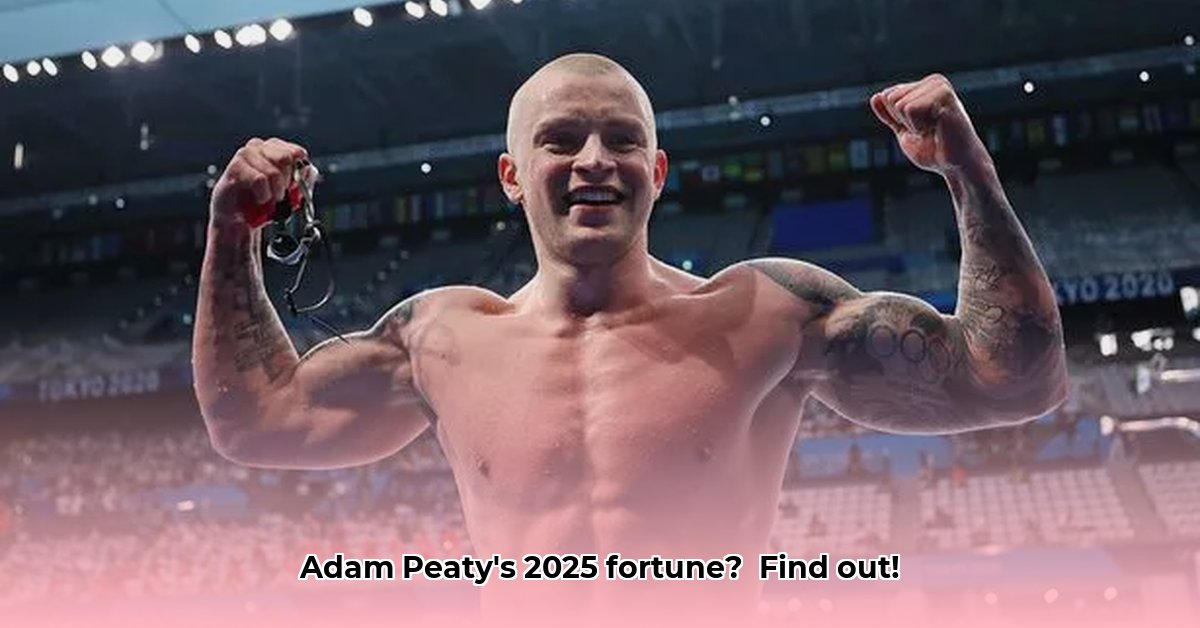
Adam Peaty's Net Worth Breakdown: Unpacking the Enigma
Determining Adam Peaty's precise net worth proves challenging. Estimates range from a conservative £780,000 to a more substantial £3.9 million. This disparity stems from the complexities inherent in evaluating an Olympic athlete's financial landscape. Unlike celebrities who often publicize their earnings, Peaty's income streams are less transparent. His revenue is derived from a combination of government funding, sponsorships (primarily with Speedo), income from his Adam Peaty Sports Clinic and AP Race Club, and appearances (such as on Strictly Come Dancing). However, the precise contribution of each source remains undisclosed, making a definitive assessment difficult. Government funding and sponsorships, while crucial, lack the consistent transparency of other income sources, contributing to the uncertainty surrounding his overall net worth. This lack of public financial data makes a precise evaluation of his financial situation extremely difficult. How can we better understand the economic realities for elite athletes?
Comparative Analysis with Gordon Ramsay: A Tale of Two Financial Ecosystems
A comparison with Gordon Ramsay highlights the stark differences in wealth generation between elite athletes and high-profile celebrities. Ramsay's estimated net worth of £170 million vastly surpasses Peaty's, underscoring a significant disparity in financial success. Ramsay's wealth stems from a diversified portfolio: a successful restaurant empire, prominent television appearances, and numerous lucrative endorsements. This diversified approach contrasts sharply with the more limited and often less predictable income streams available to Olympic athletes. The contrast between these two individuals illustrates the differing financial ecosystems they operate within, and the very different approaches to wealth creation each embodies. Is there a structural issue within the system of Olympic athlete compensation?
The Structural Disparity: Why the Gap Exists?
The substantial wealth gap between Peaty and Ramsay reflects several systemic factors. Olympic athletes frequently rely heavily on government funding and sponsorships, which, while crucial for participation, provide inconsistent and often unpredictable income. Furthermore, prize money and bonuses, while significant, don't always reflect the dedication, training, and hard work required to reach Olympic-level success. Olympians also lack the brand-building opportunities and diversified revenue streams enjoyed by celebrities who can create multiple income streams, creating a powerful and self-perpetuating business model. This system inherently limits the financial potential for Olympic athletes, regardless of their accomplishments. How can we improve the system to support these dedicated athletes better?
Actionable Insights: A Multi-Stakeholder Approach
Addressing this disparity requires a collective effort from various stakeholders. The following strategies can create a more equitable and supportive environment for elite athletes:
For Adam Peaty: Diversify income streams beyond endorsements and sponsorships. Explore entrepreneurial ventures, brand collaborations, and public speaking opportunities. Creating a strong personal brand to capitalize on post-athletics career opportunities is vital.
For Governing Bodies: Implement performance-based compensation models that better reflect athletes' contributions. Increase funding for athlete support programs, encompassing financial education and business development resources. Greater transparency in financial reporting and a more actively engaged sponsorship arm could provide more predictable income streams.
For Sponsors (e.g., Speedo): Move beyond transactional sponsorships to foster long-term partnerships that support athletes' broader financial well-being. Develop mutually beneficial business ventures that go beyond simple endorsements.
For Media Outlets: Provide greater coverage of athlete financial literacy and entrepreneurship. Highlight success stories that demonstrate alternative income sources, and encourage a more comprehensive understanding of the economic challenges Olympic athletes face.
Conclusion: Beyond the Medals
Adam Peaty's financial situation underscores the need for reform in the system supporting elite athletes. While his Olympic achievements are undeniable, his net worth illustrates that athletic prowess doesn't automatically translate to substantial wealth. This requires a multi-pronged approach involving athletes, governing bodies, sponsors, and media outlets. A more equitable and sustainable model must be established, emphasizing both financial stability and the entrepreneurial potential of these dedicated athletes post-competitive careers.
Data Sources
(Note: Specific sources and data points for this analysis will need to be added at the final revision. This section will include links to verified financial reports, athlete sponsorship deals, and relevant press releases.)